How to wean a baby
Essentially weaning is simply the process your baby (and you) will go through when making the transition from a totally milk diet, either formula or breast, (or a combination of both), onto more solid foodstuffs.
Many parents worry about when and how to begin weaning their baby but it really doesn’t have to be complicated and if you let your baby lead the way, it can be a simple and fun process.
WHEN SHOULD YOU START
The Department of Health recommends that you wait until your baby is 6 months old before you start weaning. However, babies are all different and some may begin showing interest in your food slightly before they reach 6 months and some may seem reticent well after this age.
We have a few guidelines to refer to once your baby is indicating that they are looking for something other than their milk:
- Your baby should have good neck and head control and be able to sit, unaided, in an upright position on your lap.
- Baby watches you eat and shows an interest in your food and reaches out for objects and puts them in their mouth.
- Your baby is gaining weight well and is healthy.
- Even if all of the above does apply you should avoid giving solids to a baby under the age of 17 weeks (4 months)
WEANING METHOD
There are two weaning methods:
Spoon Feeding
- The more traditional method is spoon feeding purees and gradually changing the texture until introducing finger foods between 7 and 8 months. Many parents still stick to this tried and tested method.
- Choose foods which can be blended easily – Banana, Apple and Potato are ideal.
- Some parents begin with baby rice mixed with breast or formula milk for the very first taste of solids. Be aware that baby rice is very bland so it’s probably a good idea to move on quickly to a wider variety of flavours.
- Choose the time to introduce a spoonful of puree carefully. If your child is very hungry they may not be in the ideal mood to try something new. Many parents find the ideal time is halfway through a milk feed when your baby is partially sated but would like a little more sustenance.
- Never force the spoon into your child’s mouth. If they are unreceptive to accepting the spoon they are probably not ready to start weaning.
- Don’t worry about how much your baby eats at first – they are still getting sufficient nutrients from their milk feeds.
Baby led weaning
This method is growing in popularity and begins straight away with solid food rather than purees.
- Most importantly with this method is to let your baby choose when they start to take solids.
- The most usual time to try baby led weaning is at your mealtime. If they are reaching out for your food then they are probably ready to try something themselves.
- Soft fruit (Melon or Banana) or baked vegetables (Carrot, Sweet Potato, and Parsnip) are ideal. Cut the items into pieces around 1.5cm wide but long enough to be held in their hand.
- As with spoon feeding, quantity is unimportant initially as their nutrients are still coming from their milk feeds.
In reality, many parents now opt for a mixture of both types of weaning; some puree and some solids. The best option is to go slowly and try very small quantities whichever method you choose. Ideally, your child should be relaxed and calm and sitting comfortably in a chair for their food rather than partially lying down or in a position where they can choke.
Be prepared for plenty of mess! A coverall bib and floor cover may save you a lot of cleaning up. Most of all remember to enjoy this stage, don’t over think the process and make sure you don’t fall into the trap of trying to overfeed. Small steps will always work best.



